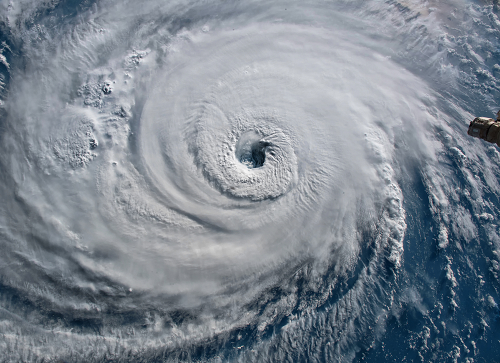Hurricanes and tropical storms account for about $9 billion in losses to U.S. commercial businesses each year. With an above-normal 2022 hurricane season predicted, businesses must prepare now for weather-related disasters. These steps can help protect your business’s people, facilities, and assets.

1 Know your risks.
When developing a hurricane preparedness plan assess who and what will be impacted. This includes not only your physical locations but also your people and suppliers. Today, nearly half of adult employees work from home. Use an emergency communication system to let employees know how to respond. Consider, too, how a severe storm may affect the organizations you rely on to conduct business. Natural disasters can reduce gasoline refining capabilities; cause shortages of drugs and medical supplies, and disrupt the food chain. Ensure your preparedness plan accounts for business interruptions, potential delays, and how you will communicate with suppliers in an emergency.
2 Prepare an emergency response plan.
Some people refer to this as a Business Continuity Plan or Disaster Recovery Plan. It should help you understand your priorities before, during, and after a storm so that you can get your business back up and running as quickly as possible. The Federal Emergency Management Agency (FEMA) has put together a Business Hurricane Toolkit that can help you create a plan.
3 Back up your network and data.
According to FEMA, many businesses never fully recover after a disaster. Part of the reason involves the loss of critical data. Know the location of sensitive data and critical assets at each of your sites and how a hurricane may impact them. Experts recommend storing important information off-site and backing up your data on-premises, at a remote site, and in the cloud.
4 Secure your facilities.
Businesses closer to the coastline typically experience more property damage than those further inland. However, high winds and flood waters can affect businesses hundreds of miles away. Protect your buildings by boarding up windows and doors, placing sandbags outside any openings to your office, and ensuring you have a backup power system to keep critical security including cameras, fire, and other alarms working. Review your insurance coverage and keep a list of policy numbers available.5 Plan for after the storm.
Work conditions can change drastically after hurricanes. Response and recovery workers will face challenges such as downed power lines, uprooted trees, and high volumes of construction debris while performing otherwise familiar tasks. OSHA offers a Hurricane eMatrix to help you identify hazards and make decisions about operations to protect workers in hurricane-impacted areas.
For more hurricane information, download or stream any of the Texas Department of Insurance, Division of Workers’ Compensation-Workplace Safety’s free Natural Disaster Preparedness and Recovery publications or videos, or visit the OSHA Hurricane Preparedness and Response website.
